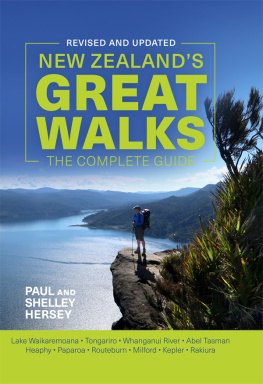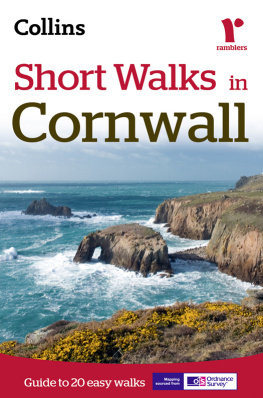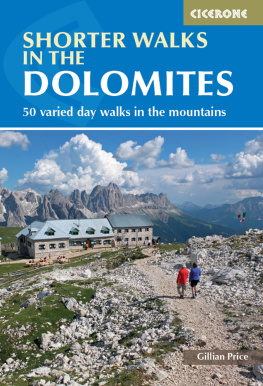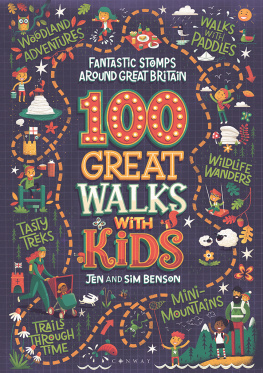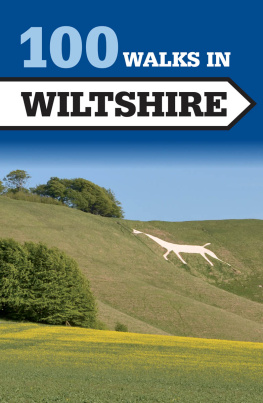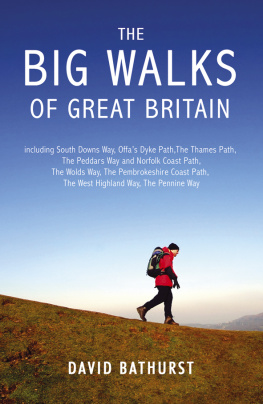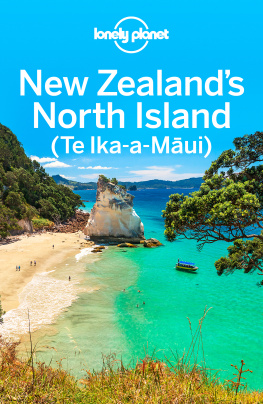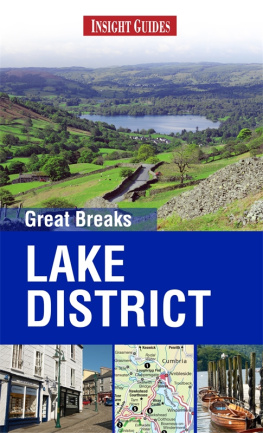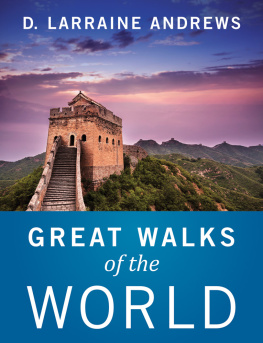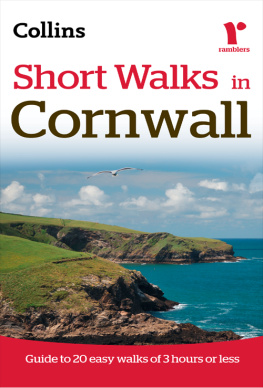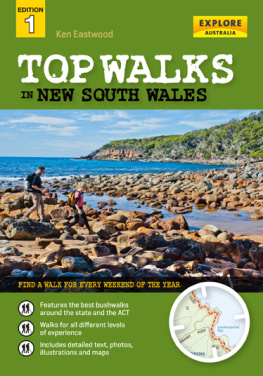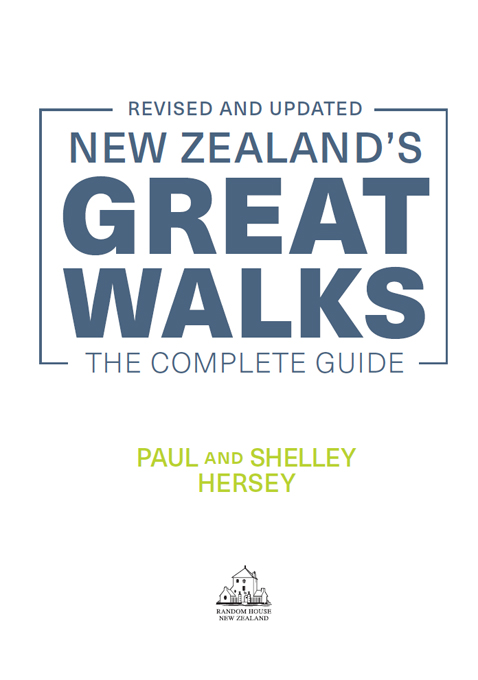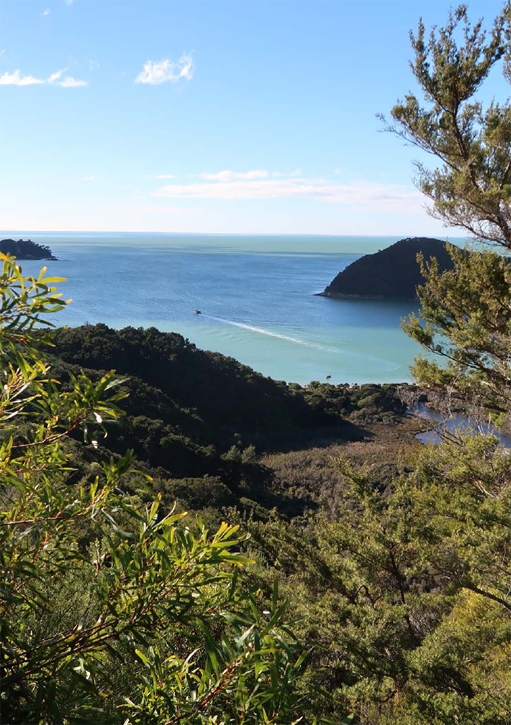We hope that you enjoy the experience of travelling along these special pathways as much as we do. This book will help guide your journey; a reliable companion as you enjoy the walks. The information within these pages highlights not only how to get the most out of each trip but also how to understand better what it is you are experiencing. And, if you feel so inclined, how to share in the legacy by giving back to the environment.
If you have travelled from overseas we welcome you to Aotearoa, the Land of the Long White Cloud. Breathe. Open your eyes and your mind. Take the first of many steps. And if you are a Kiwi finally venturing out on a track you have heard so much about, well done and its about time!
May you be blessed with warm days and star-filled evenings. Embrace the rain when it inevitably arrives. Listen for the nightly call of the kiwi, our national bird, and wake at dawn to a cacophony of song from t and bellbirds. Rise refreshed, only to end the day with rewarding aches in your muscles that come from time well spent.
We believe that New Zealands Great Walks, along with the rest of our national parks, reserves and untarnished back country, are precious beyond belief. Pockets of quiet paradise are becoming more difficult to find in a busying world. So we ask you to treat them with the respect they deserve. We offer no apology for feeling so protective of what is such a beautiful taonga (treasure). As you walk (or cycle or kayak) each of these tracks or waterways, consider how much ongoing effort and care is required to ensure the landscape remains safe from overuse and development. Keep your footsteps light.
Travel well.
INTRODUCTION
New Zealand currently has 10 Great Walks (one of which is actually a Great River Journey). In a country with hundreds of tracks these are considered the best of the best, in that they pass through some of our most spectacular landscapes, have a range of comfortable huts and campsites to stay at and are maintained to a high standard.
The Great Walks range in length from 32 to 82 kilometres, and normally take between two and six days to complete (although some are done in a day by those crazy long-distance runners!). The Whanganui Journey on a river is 145 kilometres long and takes up to five days to paddle by canoe or kayak.
Apart from the Waikaremoana Track and the Whanganui Journey, both of which are in the North Island and have their own status (this will be explained later), the other Great Walks fall under the umbrella of our extensive national park network. Tongariro was this countrys first national park; indeed, it was one of the first in the world. In 1887, the summits of the peaks were gifted to the Crown in what was termed a tuku whenua, or land transaction, by the great chief Horonuku Te Heuheu Tkino, in a bid to preserve the peaks spiritual significance. The park has been expanded massively since that first gift, and now has World Heritage status.
Today there are 13 national parks spread throughout the country. Overall, New Zealand has around 10,000 protected places covering more than 8.6 million hectares. This means that about a third of our land area lies within the protective banners of the 1977 Reserves Act and the 1980 National Parks Act. Within these special areas, natural and cultural resources, along with a varied biodiversity, are preserved, maintained and managed. To many Kiwis, having so much of our precious land coming under this protection is what helps give New Zealand its distinctive character. And, to some, it is essential to our way of life.
All of the Great Walks, other than the coastal Abel Tasman track at the top of the South Island, are at least partially located in hilly country or alpine areas. New Zealand is considered a mountainous land, with three-quarters of the country lying more than 200 metres above sea level. And it is a land of constant change. Through millions of years of folding and faulting along the Pacific and Indo-Australian tectonic plates, of uplifting the terrain and then eroding it down again, our landscape has been shaped both by the deep forces of the world and by the local climate.
In 1642, the explorer Abel Tasman sailed past the land that would later become a national park named after him.
Through these evolving and varied landscapes pass our Great Walks. Only the Tongariro Northern Circuit, which crosses a moonlike, volcanic landscape in the middle of the North Island, and the alpine Kepler Track near the bottom of the South Island are complete circuit tracks. All of the other Great Walks are through tracks, requiring some form of transport to get back to the start.
If youre not planning on staying overnight, walking any of the Great Walks is free, and the beginnings and ends of some of them are often completed as day trips (the Tongariro Crossing, for example, can be very popular in summer). The Department of Conservation, which ably manages the walks, sets a natural limit to visitor numbers; you will therefore need to book and pay in advance for overnight accommodation in the huts and tent sites. This money goes back towards the high cost of maintaining the huts and the tracks.
To cope with an ever-increasing demand from domestic and international tourists, a tenth Great Walk the 55 kilometre Paparoa Track on the West Coast of the South Island was recently added. Incorporating parts of the existing Croesus and Pororari tracks, a new section of track has been cut to link the others and two more huts have been built, allowing formed access to a previously difficult-to-reach part of New Zealand. Open to both walkers and cyclists all year round, the Paparoa is the first new track added since the Great Walks network was established back in 1993. There is the possibility of more tracks being raised to this status in the near future.

